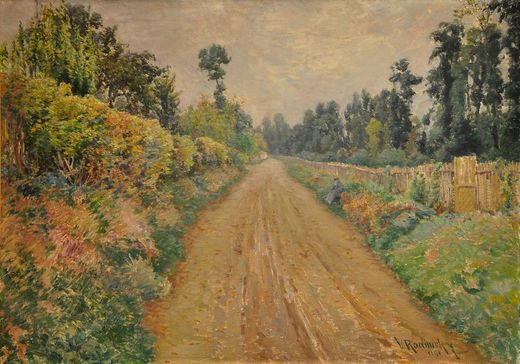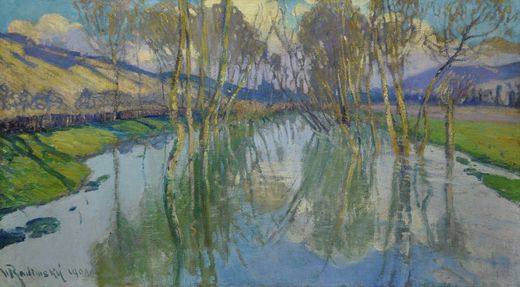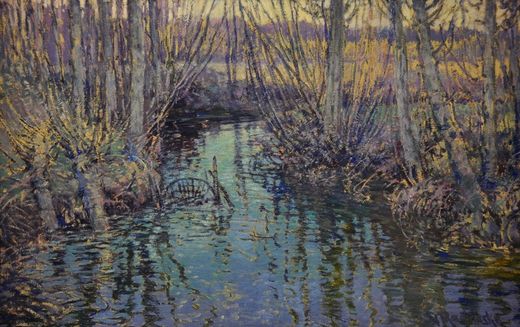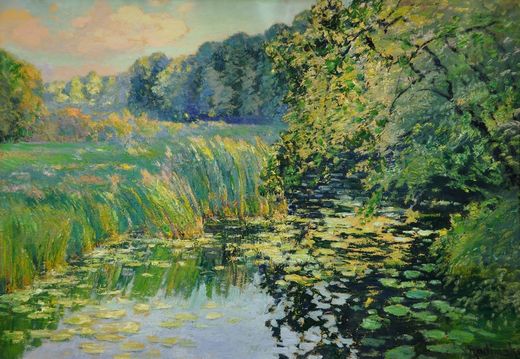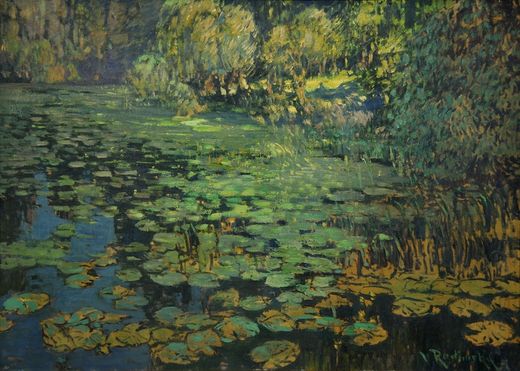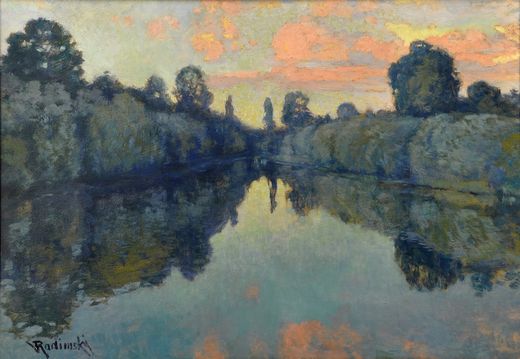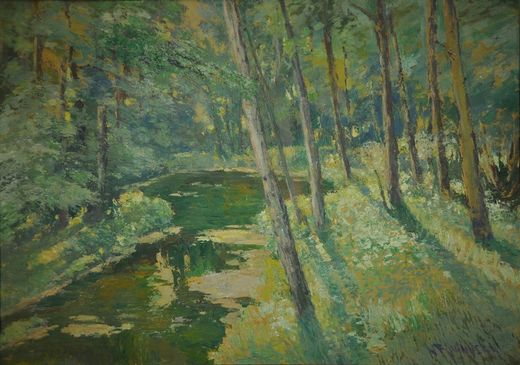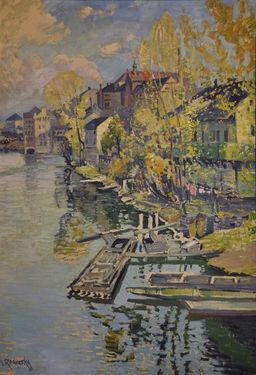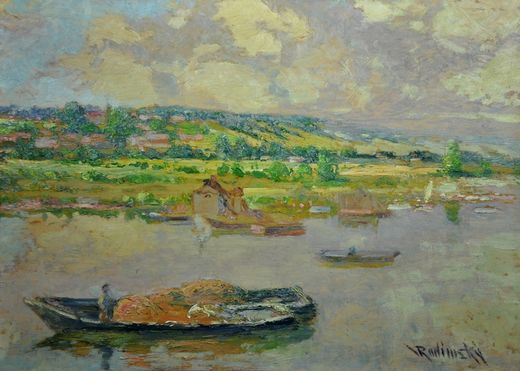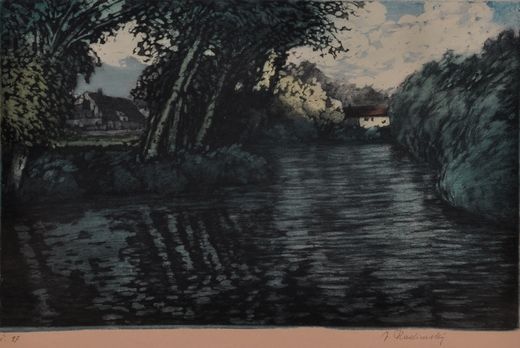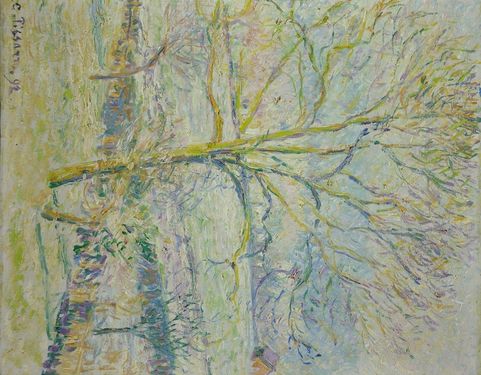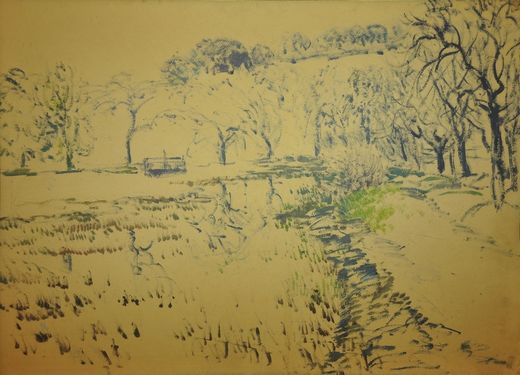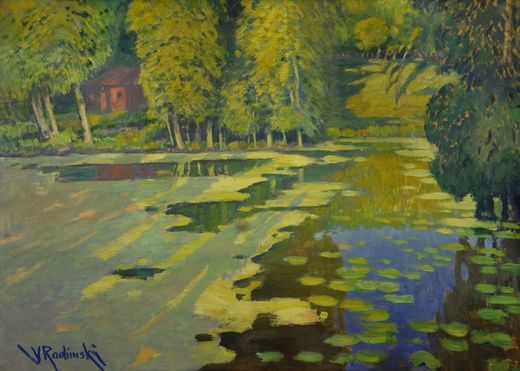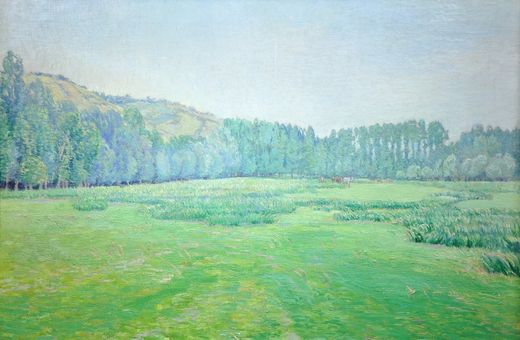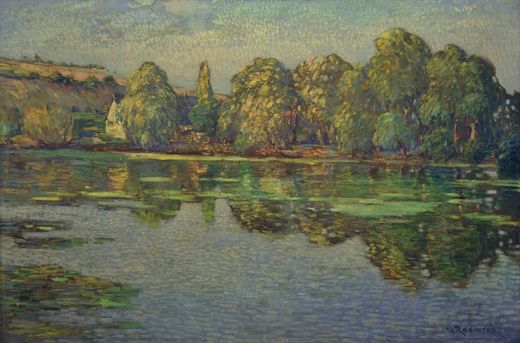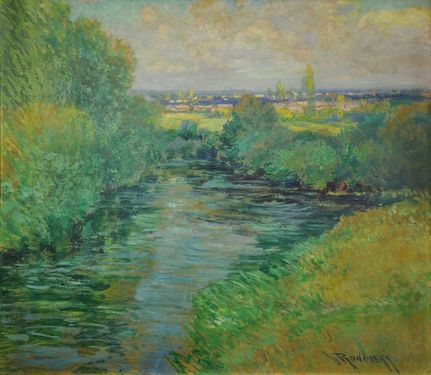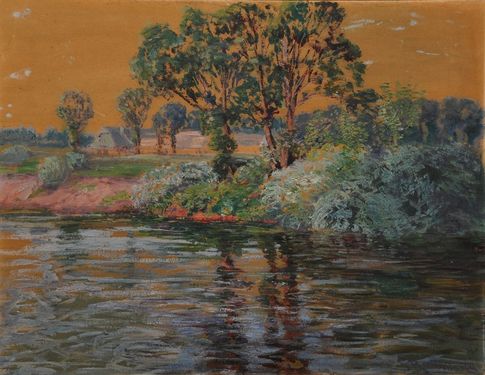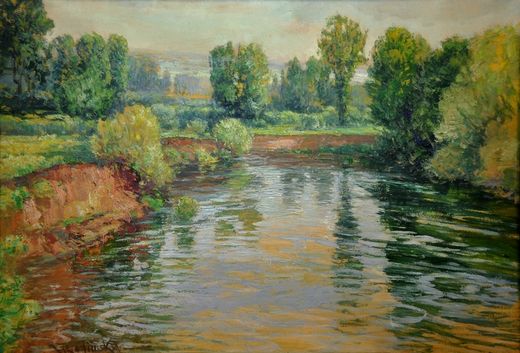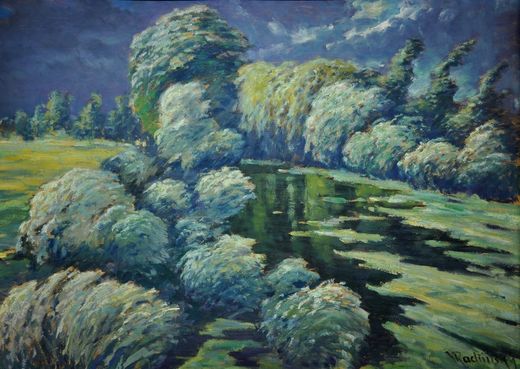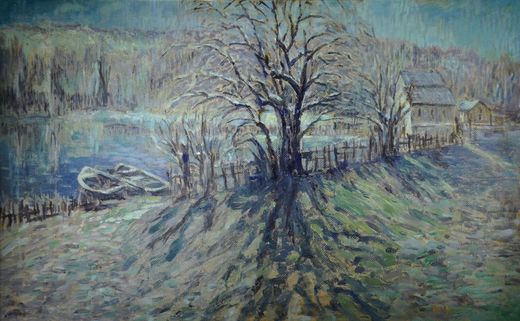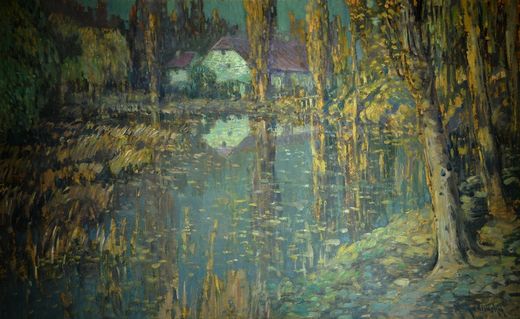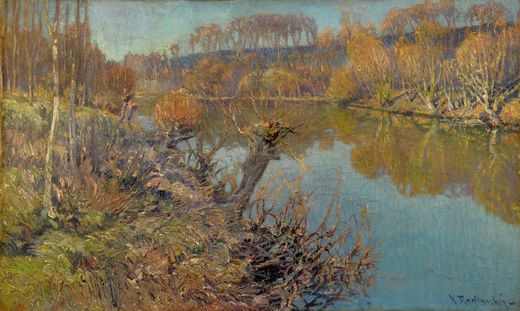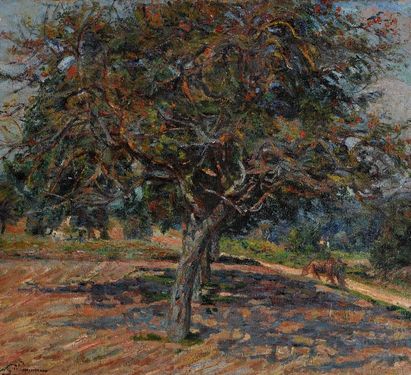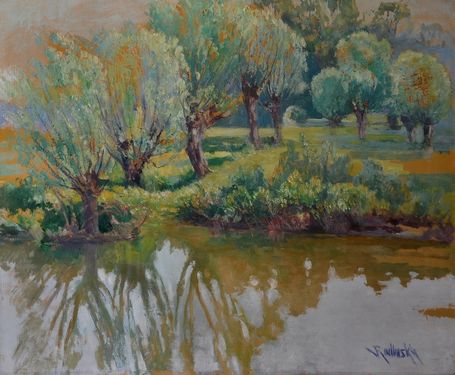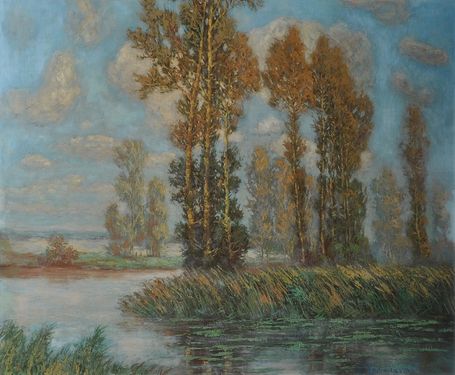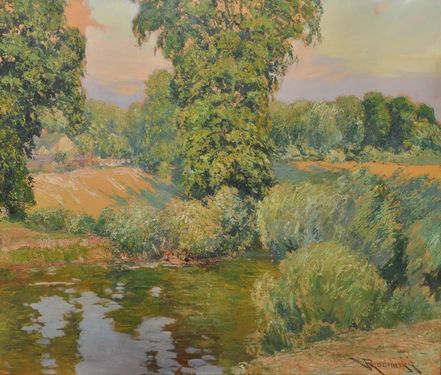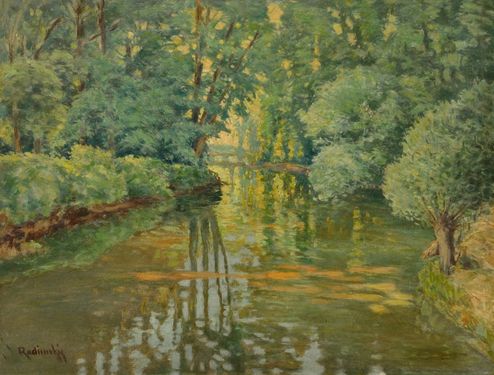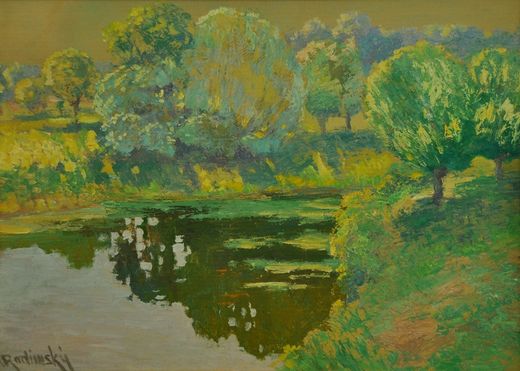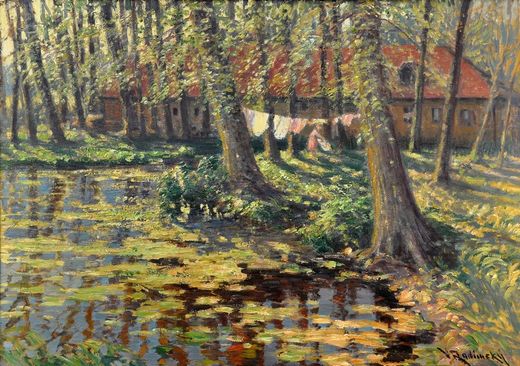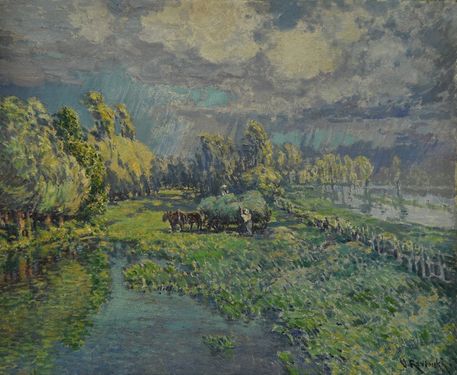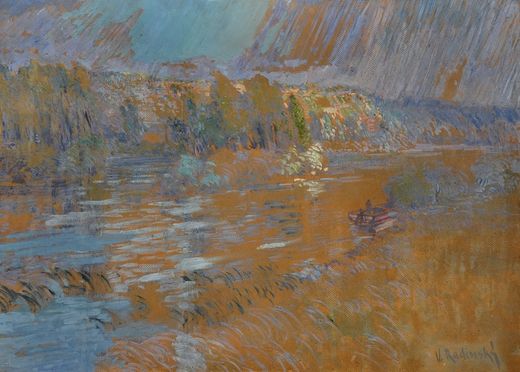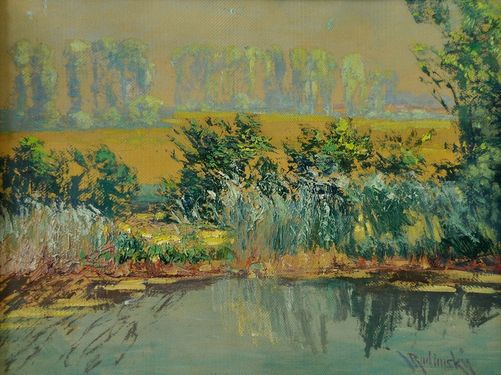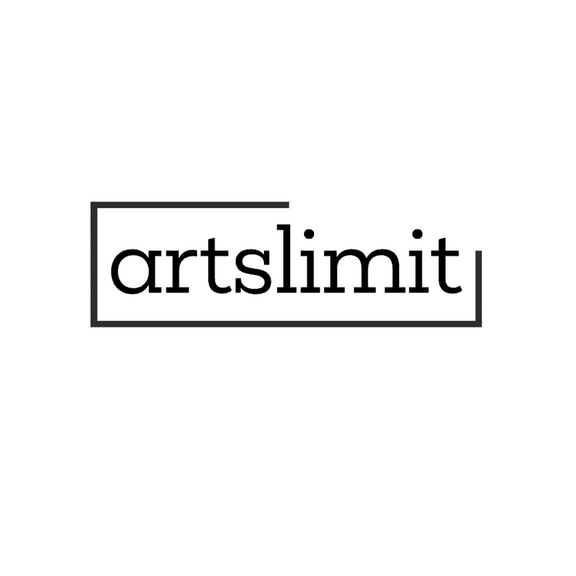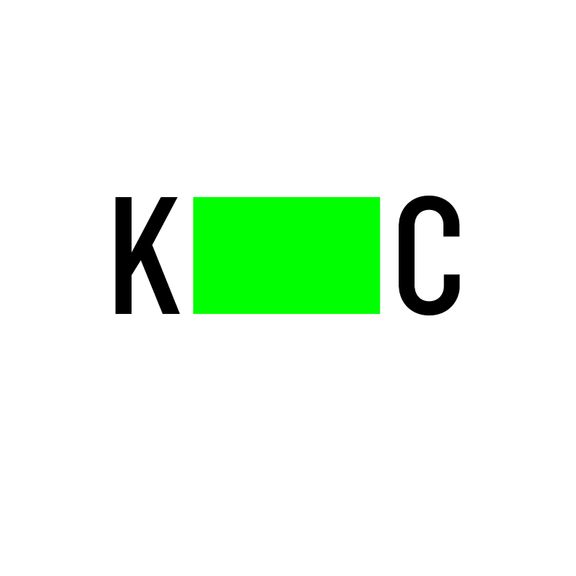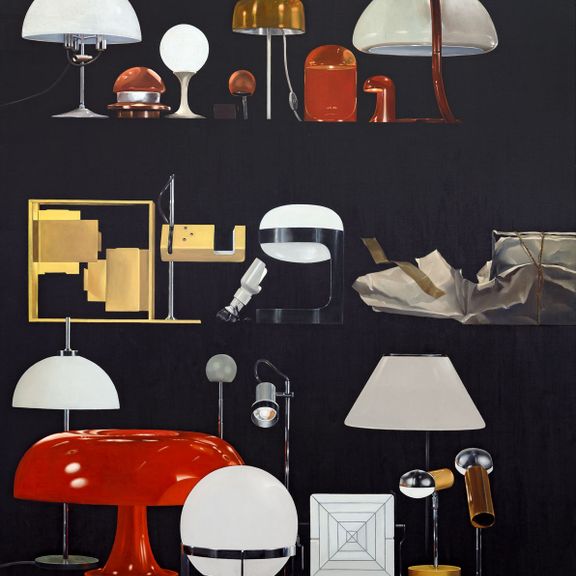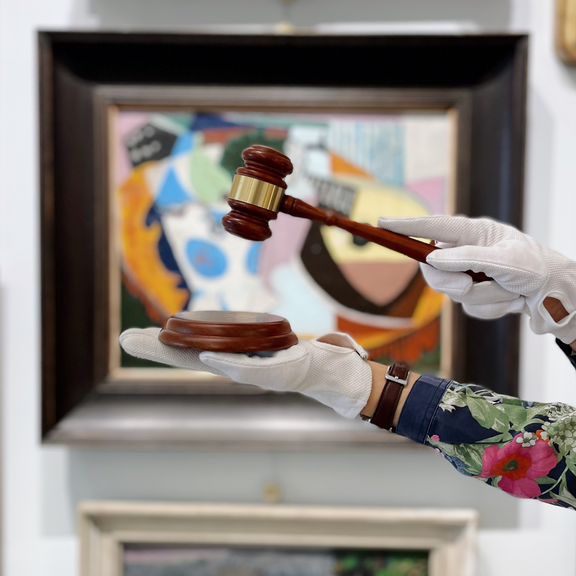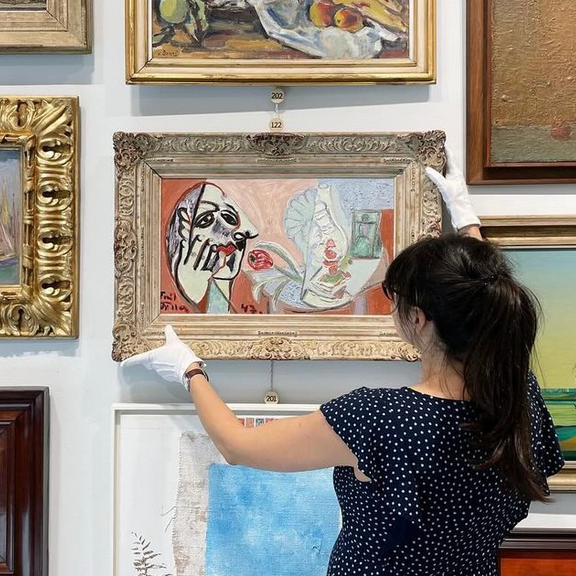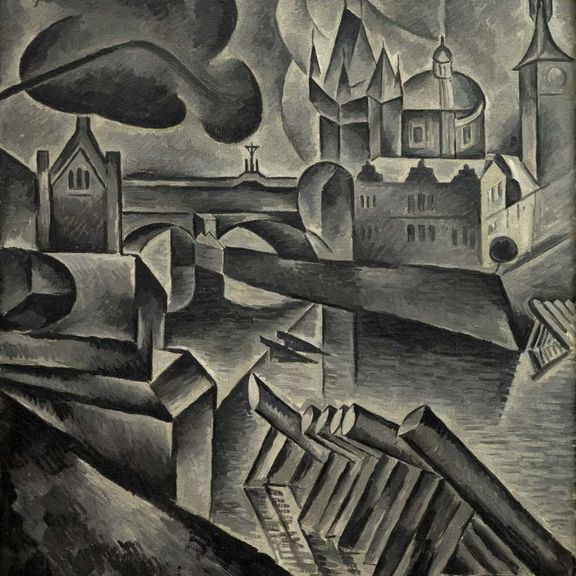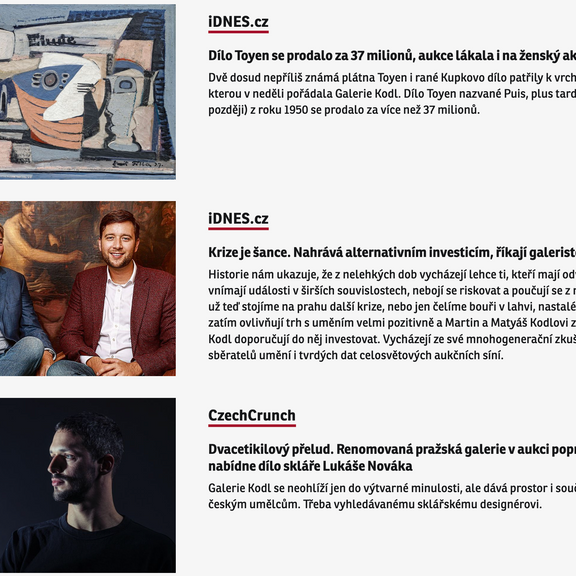Václav Radimský (1867-1946)
Landscape painter Václav Jan Emanuel Radimský was born on 6 October 1867 in Kolín in the family of lawyer Václav Radimský, who was also the owner of the mill and later also a landowner in the Pašince. Wenceslas' family was not only affluent, but also with cultural interests, and therefore tried to give children careful education and education.
After the grammar school, Václav went to study abroad. He stayed briefly in Munich, studied at the Eduard von Lichtenfels private landscape school in Vienna, and in 1889 went to France. At the initiative of the painter Zdenek Braunerová, he settled around 1892 in Barbizon, where he had the opportunity to directly get to know the French Impressionist painting, especially paintings by Claud Monet and Camilla Pissarra, who became his role model.
At that time, the famous Monet lived in Giverny and a large colony of painters from around the world was created around him. Among them was a Czech with an Austrian passport since 1895 - Václav Radimský. Radimský first lived at the Baudy Hotel, like most painters settled in Giverny, then rented a house here and eventually settled a little lower for many years downstream of the Seine River in Le Goulet near Vernon, in the old unused mill La Bergamotte.
Here he set up a studio and had an anchored boat on the Seine, which he used as a floating studio and said he sometimes painted together with Monet. He was very hardworking, painting lightly and quickly. In Giverny, a large set of shots on the Seine River was created in different seasons. However, he liked to look for sunny parts, views of the water surface, capture the reflections of trees on the water surface and focused on capturing shimmering lights, sun rays and the color of the color atmosphere of the day.
Radimský was successful in France. He exhibited at the Paris Salons, in 1894 for the painting of Fern (Etudes de Fougeres) won the award as the youngest painter. A year later he received a gold medal in Rouen and in 1900 at the World Exhibition in Paris.
He maintained a regular connection with his home, sending exhibitions of Krasoumné Jednota, eighty -eight paintings exhibited by Topiče in 1899 provided the Czech public the first information on Impressionism. The Golden Praha, Světozor or Free directions regularly printed the reproductions of his paintings.
As a member of the enemy country, during the First World War, he was initially interned in a Rouen prison and released at the intervention of Prime Minister Georges Clemenceau, who also bought a Radim painting.
Radimský, disappointed by France, returned home after the war and settled on his native farm in Pasinka near Kolín, who then belonged to his half -brothers. Here he lived and worked until his death in 1946.
When Radimský returned to Bohemia after the First World War, Czech painting, including his peers, was heading for another, another expression. Radimský remained alone in extending the tradition of Impressionism. His painting, which remained illuminated according to the French model, focused mainly on the nature of the middle Elbe, began to harvest criticism.
Radimský was hardworking, diligently painting, and one exhibition alternated the other, all of them were commercial, so his paintings in private property still prevail. Václav Radimský died in 1946 at the age of nine in the Cologne hospital for pneumonia.
Radim's work can be divided into two theme and time circuits. The first fell approximately 1890 to 1918, when the painter lived near Giverna near Barbizon and his constant inspiration was the Seine and Nature around Giverna. The second was defined by Radimský's return to Bohemia after the end of the First World War and his death.
At that time, the painter's interest with the same intensity focused mainly on the display of the Elbe and the landscape around Cologne. Radim's paintings were characterized by a simple but impressive landscape scope, a distinctive and spectacular color scheme. Its range of yellow, green, brown and blue tones was impressive.
Interesting was also the way of painting, which he used in some paintings, with omitting places on cardboard, ie using its basis. Radimský met this technique in France.
The sales exhibition of paintings by Václav Radimský in the Kodl Gallery was not extensive, but certainly pleased visitors with the quality of its offer.
In the autumn months of the year of the Gallery of the City of Prague, the comprehensive exhibition of this painter was prepared by the Capital City Gallery and the concentration of Radim's works at this exhibition in the Municipal Library was supposed to be discovery.
Naděžda Blažíčková-Horová
Items of the exhibition
